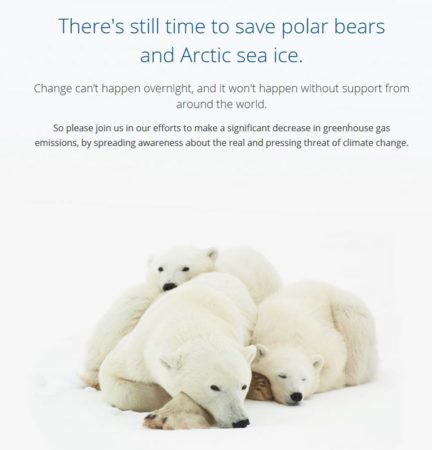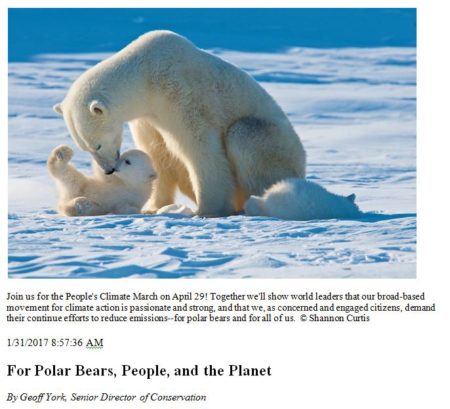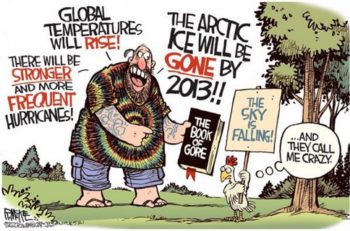Oddly, activist organization Polar Bears International recently updated their website and now suggest there is still time to save polar bears and sea ice – even though the IUCN Red List documented more polar bears alive in 2015 than at any time in the last 50 years, despite the recent decline of summer sea ice – and even more bizarrely, call for a public uprising.
Polar Bears International (with three polar bear scientists on staff and other as active advisors) suggest that people who love polar bears should march the streets on Earth Day with scientists to demand (as concerned and engaged citizens) that world leaders take them seriously.
Wow. I’ve been a career scientist for more than 40 years and I have to say, this is the oddest phenomenon I’ve encountered being advanced in the name of science. To me, it shows how disconnected these people are from what science is meant to be and what scientists are meant to do. Not just the polar bear scientists but the others like them that are behind this proposed march.
I recommend this blog post by Willis Eschenbach – an excerpt below.
[Note that sometime today, this blog – that focuses on polar bear science past and present without fear-mongering spin – will surpass 1 million views].
Well, that’s not entirely true about them not being for anything. Here you go, here’s what passes for their message:
“Yes, this is a protest, but it’s not a political protest,” said Jonathan Berman, a postdoctoral fellow at the University of Texas Health Science Center at San Antonio and a lead organizer of the march. “The people making decisions are in Washington, and they are the people we are trying to reach with the message: You should listen to evidence.”
“Listen to evidence”? That’s it?
Well, the evidence regarding polar bears is that they are not particularly sensitive to low levels of summer sea ice and their numbers have not declined in response to large declines in sea ice habitat as models predicted.
How about we listen to that evidence, which polar bear researchers themselves have collected? My recently published paper here lays it all out.

















